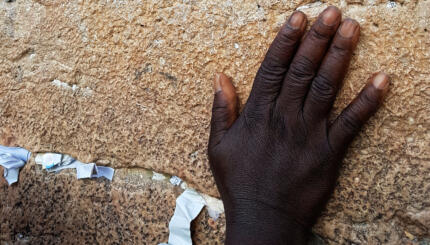Bar/bat is today celebrated as the moment when a child is obligated to observe the commandments. Yet much of its excitement derives from the fact that the bar/bat mitzvah ceremony is the first time the child actually performs, and is even allowed to perform, certain mitzvot (commandments). Reprinted with permission from the Second Jewish Catalog, published by the Jewish Publication Society.
The bat/ celebration as we know it today is not simply the time when a child becomes obligated to observe the commandments: It is the time when children are first allowed to participate in and perform the various rituals associated with full membership in the community.
Prior to this time the child dons no tefillin (phylacteries), is not accorded the privilege and honor of being called up at services to make a blessing over the , cannot serve as one of the ten adults needed to comprise a minyan (the quorum necessary for community prayer), cannot act as the baal tefilah or baal koreh (the individual who leads the congregation in prayer), and in certain congregations does not wear a prayer shawl. (The traditions associated with the latter custom vary widely).
ic sources make it quite clear that this was once not the case. While a child was obligated to perform these rituals by 13 [12 for girls], if he understood their significance prior to that time and was considered capable of performing them, he could do so, even though he had not yet reached the age of majority. The Talmud (Sukkah 42a) explicitly states, "If a minor knows how to wrap himself in the tallit, he is subject to the obligation…if he knows how to look after tefillin, his father must acquire them for him."

Help us keep Jewish knowledge accessible to millions of people around the world.
Your donation to My Jewish Learning fuels endless journeys of Jewish discovery. With your help, My Jewish Learning can continue to provide nonstop opportunities for learning, connection and growth.
This is not the sole Talmudic source indicating that the rituals we associate with the bar mitzvah were observed prior to 13. "All are qualified to be among the seven [who read from the Torah], even a minor" (Megillah 23a).
It is obvious, then, that while 13 was the age of entry into the adult community for the child, it was not associated with the performance of particular religious rituals. If a child had been wearing phylacteries for a number of years and had read from the Torah on numerous occasions prior to his 13th birthday, to do so at age 13 could not have been a great event or even an innovation. The religious distinction between a minor and a major in talmudic times was, it appears, primarily theoretical.
In the Middle Ages, sometime between the 14th and 16th centuries, the bar mitzvah concept and the celebration that accompanied it took on a form different from what is indicated in the Talmud and became quite close to the more essential elements of contemporary practice.


